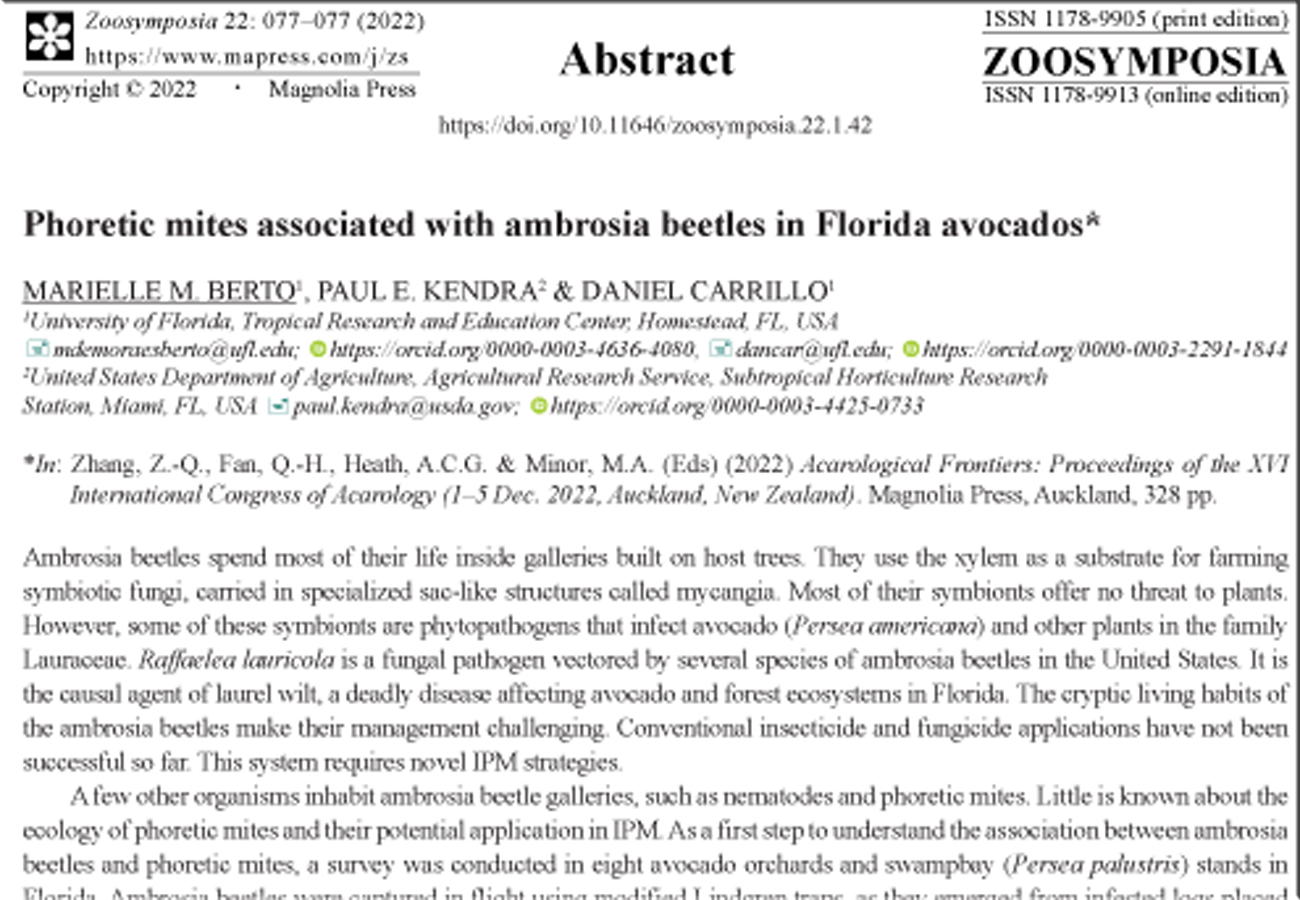Abstract
Ambrosia beetles spend most of their life inside galleries built on host trees. They use the xylem as a substrate for farming symbiotic fungi, carried in specialized sac-like structures called mycangia. Most of their symbionts offer no threat to plants. However, some of these symbionts are phytopathogens that infect avocado (Persea americana) and other plants in the family Lauraceae. Raffaelea lauricola is a fungal pathogen vectored by several species of ambrosia beetles in the United States. It is the causal agent of laurel wilt, a deadly disease affecting avocado and forest ecosystems in Florida. The cryptic living habits of the ambrosia beetles make their management challenging. Conventional insecticide and fungicide applications have not been successful so far. This system requires novel IPM strategies.
References
Khaustov A.A., Berto, M. & Carrillo, D. (2022) A new species of Brasilopsis and redescription of Acarothorectes curculionium (Acari: Pygmephoridae) associated with ambrosia beetles (Coleoptera: Scolytinae) from USA. Systematic and Applied Acarology, 27(8), 1648–1662.


